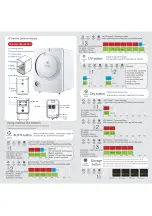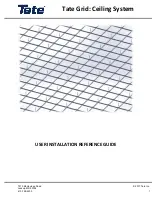
89
The combination of the pachymetric graphs and indices and elevation maps which utilize an
enhanced reference sphere make possible an increased sensitivity and specificity in the screening of
patients for ectatic disease. Each of these values (change in anterior elevation, change in posterior
elevation, corneal thickness at the TP, TP displacement, and pachymetric progression) can be
evaluated against a previously determined set of normal values to assist the physician in determining
‘normal,’ ‘suspicious’ and ‘abnormal’ corneas.
The second version of the Belin/Ambrósio Enhanced Ectasia Display (Release II) (Belin/Ambrósio
Enhanced Ectasia Display II – software # 1-17b37) simplifies the physicians’ evaluation and was
updated in response to inquiries from Pentacam® users. The new display reports five differential
parameters individually change in anterior elevation from standard to enhanced reference surface,
change in posterior elevation, corneal thickness at the TP, TP displacement, and pachymetric
progression) (Df (front), Db(back), Dp (pach progession), Dt (thinnest value), and Da (thinnest
displacement)). Each of these values is shown on the bottom right of the display and is reported in
numerical form giving the SD from the population mean for that individual parameter. These numbers
are colour-coded to turn yellow when
≥
1.6 SD from the mean and red when
≥
2.6 SD from the
mean and are white when < 1.6 SD. The final parameter “D” represents an overall reading of all five
parameters. This is calculated by performing a regression analysis against a standard data base of
normal and keratoconic corneas.
The major advance is that while an individual parameter(s) may fall outside the norm the final
overall comprehensive reading may still be viewed as normal
(Figure 110, Figure 111)
. Conversely,
multiple yellow or suspicious parameters may be significant enough for the final reading D to be red
or abnormal
(Figure 112)
, while more advanced cases of keratoconus may show with multiple yellow
and red parameters
(Figure 113)
.
The Belin/Ambrósio Enhanced Ectasia Display is a valuable tool but is never a substitute for clinical
judgment. Each surgeon should evaluate each component of the map in addition to the final overall
reading. This information needs to be evaluated taking into account the patient’s age, history,
correction and residual bed thickness. It should be understood that the normal values are generated
from a “normal” myopic population and that geographic and ethnic variations do exist. Additionally,
hyperopic individuals have been observed to have greater variability, particularly on the posterior
corneal surface.
Conclusion
The Belin/Ambrósio Enhanced Ectasia Display was the first comprehensive refractive surgical
screening tool to be fully based on elevation tomography and to incorporate data from the posterior
corneal surface and corneal thickness map. The second release (version II) takes the analysis one
step further by normalising each parameter (allowing for an easier interpretation of relative risk)
and provides a final overview reading (“D” value) of the entire map. It is hoped that this additional
information will simplify the interpretation of the maps and provide greater specificity and sensitivity
in detecting early ectatic disease.
12 Belin/Ambrósio Enhanced Ectasia Display
Содержание Pentacam
Страница 45: ...43 Figure 51 General Overview display showing a low ACV shallow ACD and narrow angle in OS 9 Glaucoma...
Страница 75: ...73 Figure 86 Show 2 Exams Pachymetric showing a case of Fuchs dystrophy 11 Corneal Thickness...
Страница 214: ...212 The following pages remain free and offer space for personal notes...
















































